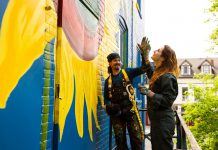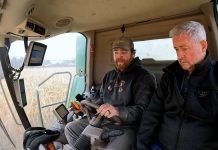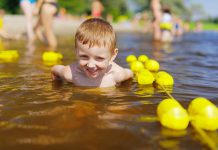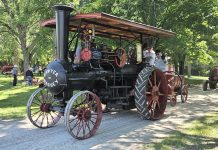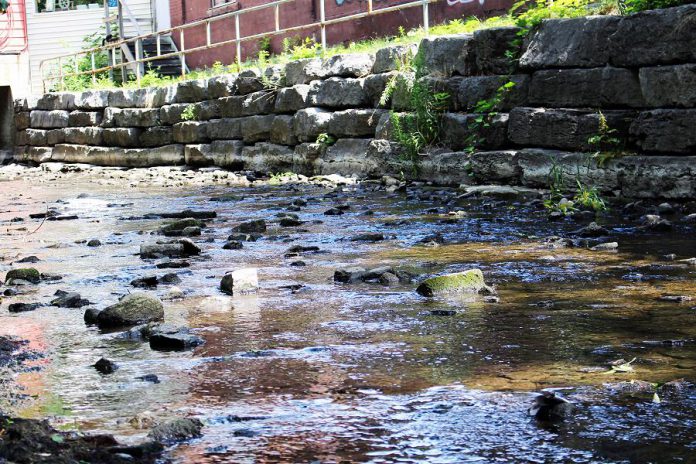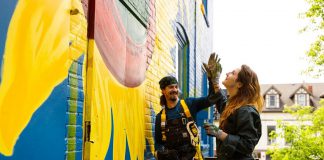Otonabee Conservation is asking Peterborough-area businesses and residents to voluntarily reduce their water consumption by 20 per cent after declaring a “Level 2 Low Water Condition”.
Otonabee Conservation analyzes the condition of the watershed on a monthly basis, and determines low-water status based on available data including temperature, precipitation, and surface water levels and flow. Weather anomalies, including well-above normal air temperatures and well-below normal rainfall, have resulted in the Level 2 Low Water Condition.
“High temperatures have also contributed to this Level 2 Low Water declaration, as June was six per cent hotter than normal and included four days when the daytime high reached 30 degrees Celsius,” explains Otonabee Conservation water resources technologist Gordon Earle. “During the first week of July, we saw daytime air temperatures that reached 30 degrees C on six out of seven days. More sizzling, hot days are expected to come, especially during the first half of the month.”
Rainfall for the preceding one-month and three-month periods ending June 30th were below 60 per cent of the normal total in the Otonabee, Indian, and Ouse River watersheds. In addition, June saw three weeks with minimal rainfall (less than 7.6mm in a week), which is another indicator of a Level 2 drought.
When a Level 2 Low Water Condition occurs, all water users are asked to voluntarily reduce their water consumption by 20 per cent. This includes municipalities, aggregate operations, golf courses, water bottlers, farm irrigation, and private users.
To reduce water use by 20 per cent, Otonabee Conservation offers the following water conservation tips:
- Turn off ornamental fountains and artificial waterfalls.
- Run full loads of dishes and laundry during off-peak use times (between 7 p.m. and 7 a.m.) and use shorter washing cycles.
- Water gardens wisely, add mulch, or use stored rainwater from a rain barrel.
- Lawns that have turned brown from the drought are not “dead”; the grass has just gone dormant from lack of water. When rainfall returns, the grass will come out of dormancy and perk back up.
- Adhere to municipal watering restrictions that may apply.
- Do not use water to clean sidewalks, driveways, patios, or decks. Instead, use a broom to sweep up.
- Do not wash your vehicles in the driveway. Delay washing your vehicles as long as possible, and visit a car wash facility when you do need to wash vehicles.
- Cover swimming pools when not in use to reduce evaporation.
- Install an efficient faucet or aerator to reduce water demands for handwashing, rinsing fruits and vegetables, or washing dishes.
- Take shorter and less frequent showers to conserve water.
- Turn off the tap while brushing your teeth, shaving, or washing your face.
- Rinse fruits and vegetables in a bowl of water rather than under a running tap. You can then use the water for house plants or in your garden.
- Keep a pitcher of water in the fridge rather than running tap water until cold enough to drink.
For more ideas to conserve water, download the Water Conservation Fact Sheet from the Ontonabee Conservation website
The Level 2 Low Water Condition will remain in effect until at least early AUgust, when the Otonabee Region Water Response Team meets again to review the current drought situation.


